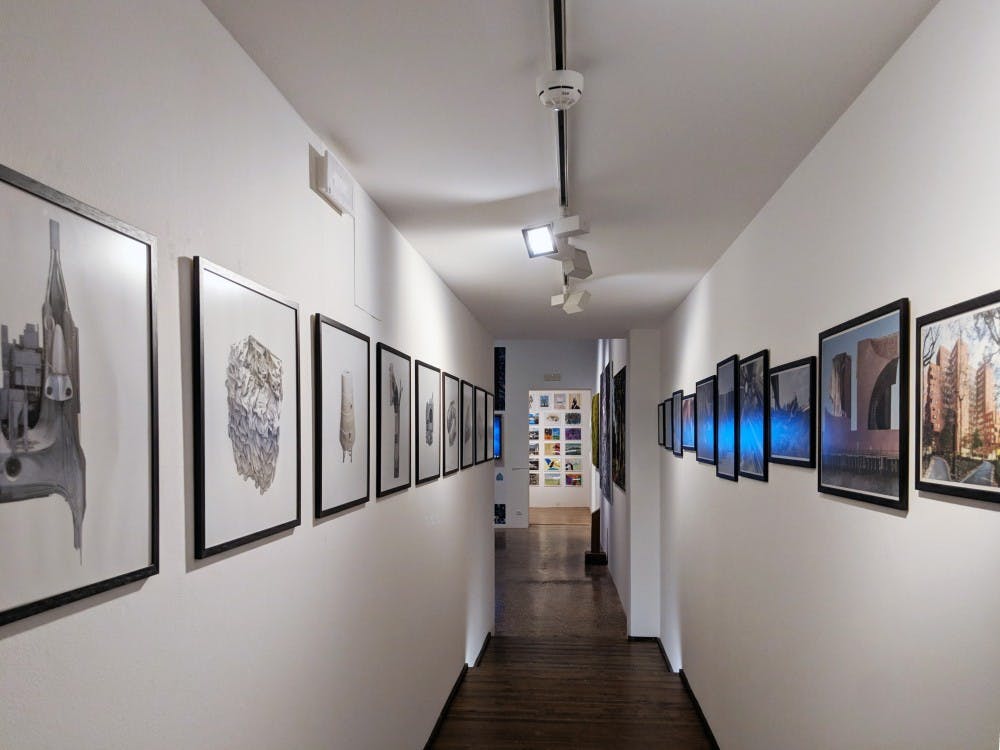Everyday we come across various architectural designs and we automatically divide them into object forms that leap forward into the foreground and those that recede into the background, oftentimes regardless of their actual distance to us. This seemingly simple concept, however, belies profound questions of how we perceive our temporal–spatial environment and how we ascribe meaning and value to architecture itself. Members of PennDesign faculty, along with teaching assistants and students, together explored these questions through their projects that culminate in the exhibition “12 Objects & 12 Images.”
Curated by PennDesign professor Ferda Kolatan, “12 Objects & 12 Images” was showcased at the esteemed Venice Architecture Biennale. The objects and images were respectively hung on the two walls of the same corridor. On one side, there are twelve images of various sizes, pictures of architectural designs photoshopped into actual sceneries. Turn around and on the other side are pictures of the twelve objects, all in the same format and size floating against a white background.
In the design of a ventilation tower by Kolatan himself, the inner structure of the tower is brought forward and becomes a part of the overall expression of the design. Background in this case means what is usually hidden in the wall or underground, what is not generally understood or valued. These things are by themselves a background, but when they’re rendered in an exhibition, they become the foreground. That’s the entire idea. The foregrounds and backgrounds are essentially just two modes of representation. They’re not different in their values.
“The way we bring things that are typically in the background into the foreground and make them part of an exhibition at Venice is a play that points towards the meaninglessness of the way we give value to a design,” Kolatan explained. “We somehow have agreed overtime that a building is beautiful when the exterior looks in a certain way. We’ve agreed to say that shafts and pipes are not beautiful and think that they belong into a building just because of their function.”
According to Kolatan, design students rarely render a mechanical infrastructure building like how it is presented in the projects exhibited. It’s also quite untypical for a design class to ask students to work with infrastructure building designs because of their aesthetics rather than their function. “What’s special is the format, the thinking, and the way you present the project, not a particular design but the whole project itself,” Kolantan said. “I had a hard time explaining them because they shouldn’t be explained. People should just go there and try to figure these things out.”
The objects and images are in two different formats using different representational tools, but they both explore the relationship between an architectural object that presents itself visually in the foreground of an environment and images that fade and melt into the background. When considering the gap and the junction where these foregrounds and backgrounds intersect, designers are actually exploring the concepts of content, meaning, value, and power in architecture.







